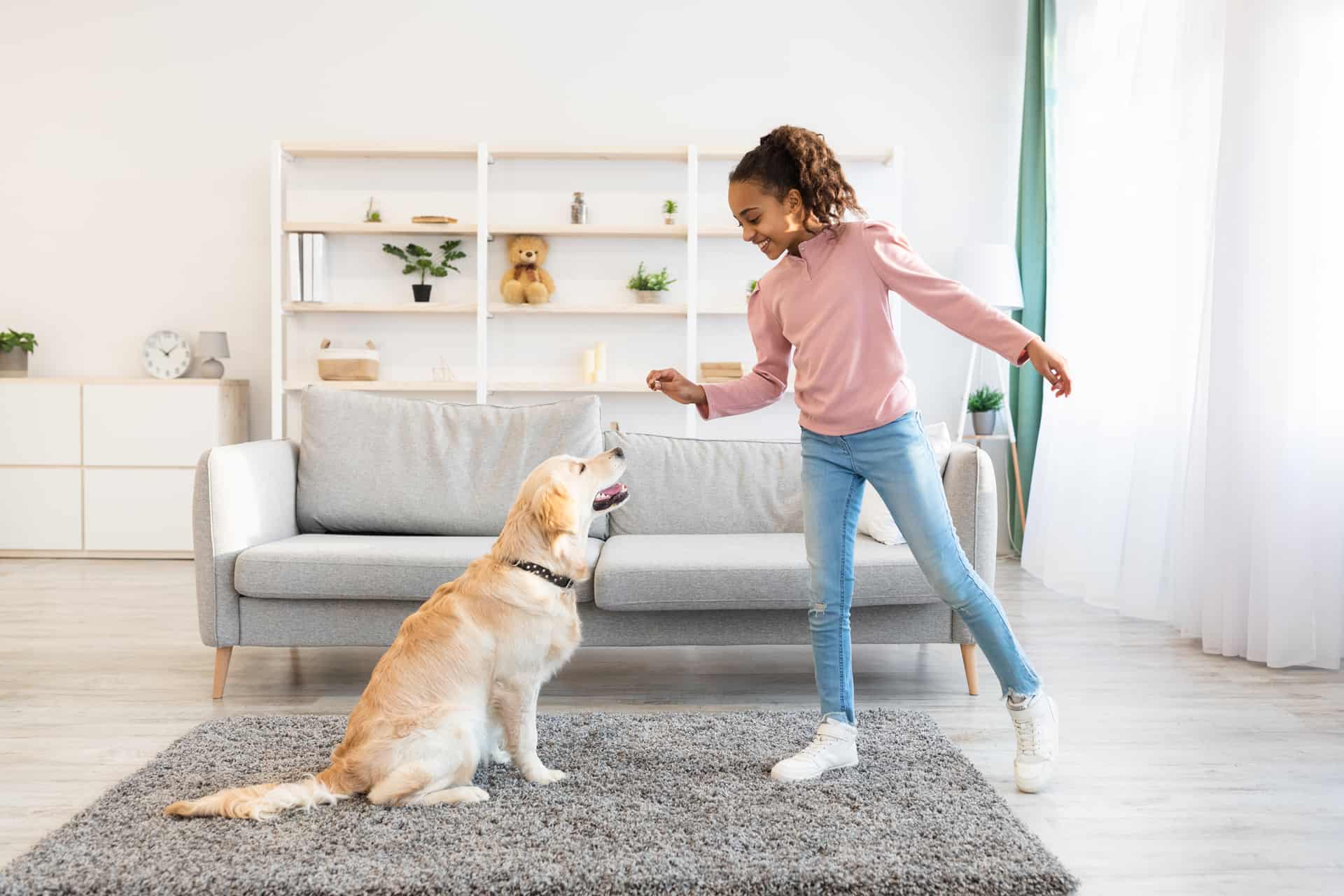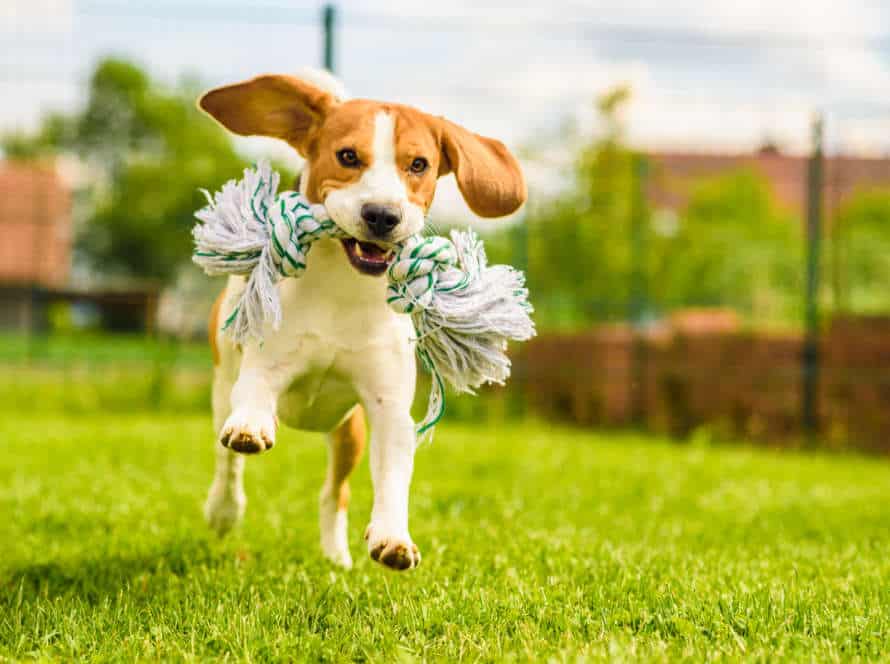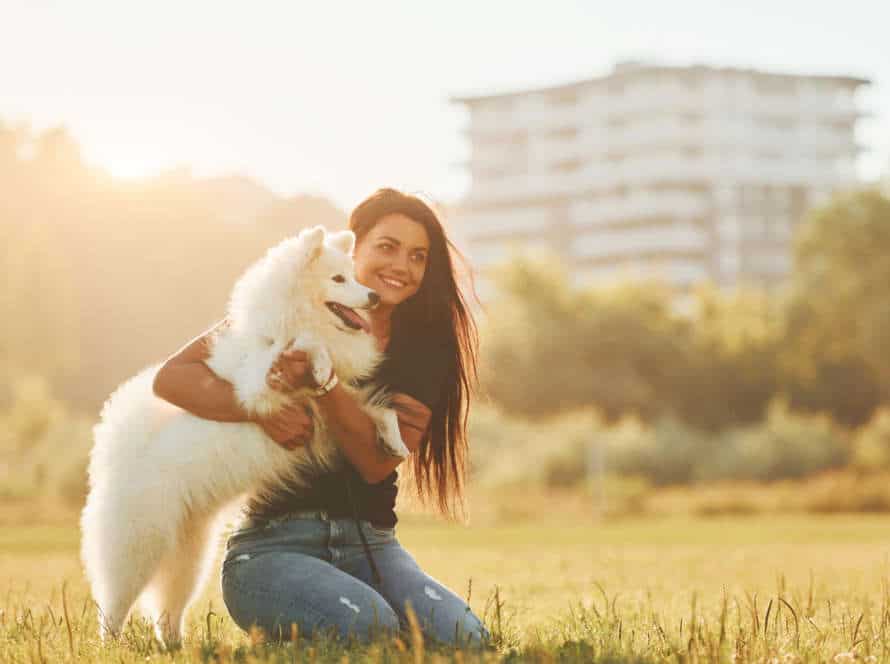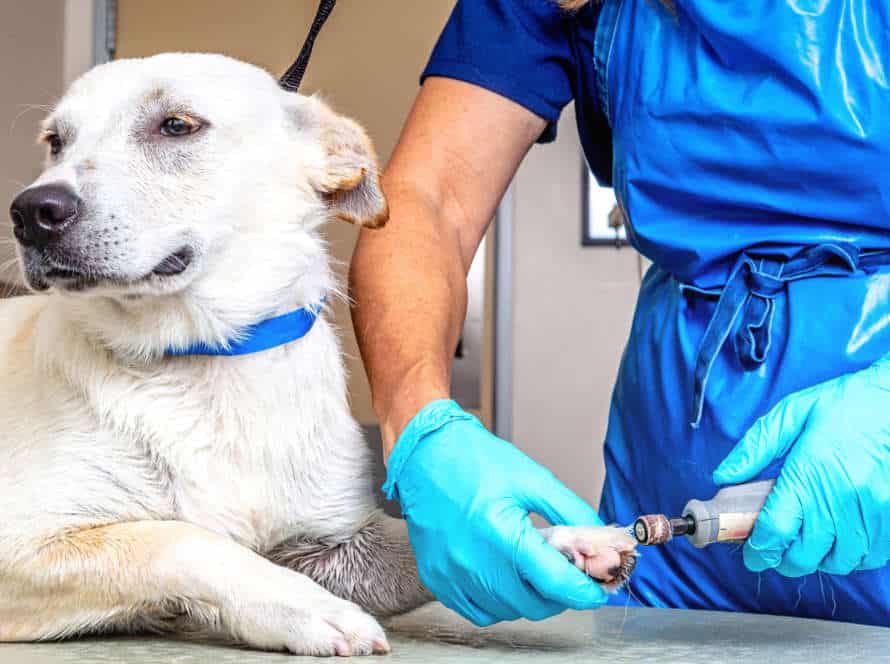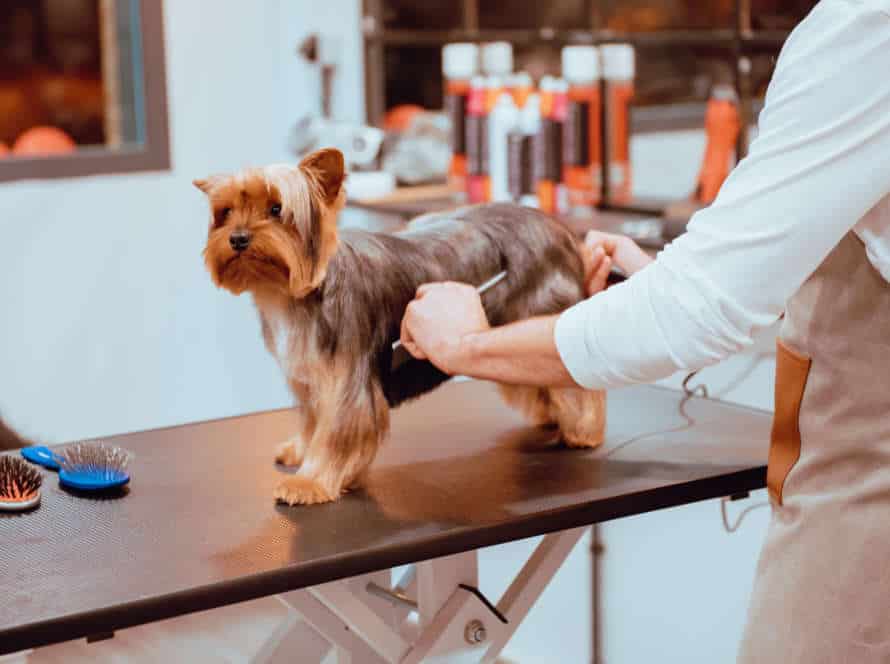Improve Your Adult Dog’s Obedience with Positive Reinforcement
Positive reinforcement is a great way to make your adult dog more obedient. Here are tips to help you do it:
- Identify the behavior you want to encourage. Like sitting on command or staying still.
- Reward your pup when it does something good. Treats or praise are great options.
- Use a marker. Like a clicker or a verbal cue.
- Be consistent. Reward your pup every time it does the behavior.
- Be patient. Dogs take time to learn new things. No punishment or negative reinforcement.
Pro Tip: Positive reinforcement doesn’t have to be treats. Verbal praise, playtime or other rewards can work too.
Understanding Positive Reinforcement
Positive reinforcement is a type of training method. It rewards your dog’s desirable behavior with something it loves, like a treat or praise. This encourages the same behavior over time. It’s essential to use positive reinforcement consistently and customize it for your adult dog. Let’s discuss how to use it effectively.
What is Positive Reinforcement?
Positive reinforcement is a method of training that rewards desired behavior in dogs. This is based on the concept of encouraging good actions instead of punishing bad ones.
Here’s how to use this method with your adult canine:
- Identify what you want them to do, such as sitting on command.
- Immediately reward them when they perform the action with a treat or praise, like saying “Good dog!”.
- Do this consistently, and eventually phase out treats in favor of praise and affection.
- Avoid punishing your pup for bad behaviour, it may lead to fear and aggression.
Positive reinforcement can help with obedience, confidence and strengthen the bond between you two. Pro Tip: Remain patient and consistent while training, as it might take some time for your pup to learn.
How Does Positive Reinforcement Work in Dog Training?
Positive Reinforcement helps encourage repeated behavior. With dog training, positive reinforcement means you give your pup a treat, toy, or compliment when they do what you want, like sitting or staying.
Here’s how it works:
- Say “sit” and when they do it right, give the reward right away.
- This teaches your pup that performing this behavior will get them something positive.
- So they repeat it to get the reward.
It’s effective because it builds a bond between you and your pup. Plus, it improves obedience and behavior.
Pro tip: Start small, like rewarding them for making eye contact, before trying more complex behaviors like “stay” and “come”.
Benefits of Positive Reinforcement Training Techniques
Positive reinforcement training has become a great way to teach adult canines obedience and proper behavior around family and other animals. Here are the benefits:
- Trust is created: Positive reinforcement helps build a connection between you and your pup. They learn that good actions bring good rewards, like treats or applause, which strengthens the trust.
- Motivation increases: Positive reinforcement encourages your pup to learn and follow commands more.
- Encourages positive behavior: This training method reinforces good behavior in your pup, so they will do it more often and consistently.
- Risk of fear or aggression decreases: With this type of training, fear-based behavior, anger, or anxiousness in your pup will be lessened, resulting in a more content and pleased pet.
Pro Tip: For the best results, use positive reinforcement techniques regularly and constantly. Praise good behavior and ignore bad behavior so your pup understands that good behavior gets the most rewards.
Setting the Foundation for Teaching Obedience
No matter how old, all dogs can learn obedience commands. For adult dogs, start by showing them humans are reliable. This builds a bond between the dog and its humans. Positive reinforcement training is the key. Through rewards-based training, the adult dog learns to trust and respect humans while learning new behaviors.
Relationship Building
Using positive reinforcement is a great way to train your adult pup and strengthen the bond between you two. Here are a few tips to help you get started:
- Have a positive atmosphere: Dogs appreciate positivity, so try to create a safe, encouraging training environment. Reward good behavior with treats, praise, and love.
- Set boundaries: Make sure everyone in your home follows the same rules, and stay consistent.
- Be patient: Don’t expect instant results. Building a strong foundation of obedience takes time and patience. Stay determined and optimistic.
- Look for any underlying issues: If your pup is having trouble following commands, it could be due to anxiety or fear. See a professional trainer or vet if this is the case.
Remember, positive reinforcement is all about trust and strengthening the relationship between you and your canine friend. With patience and persistence, you can turn your pup into a loving, obedient companion.
Understanding Your Dog’s Needs
Understanding your pup’s needs is key to creating the basis for obedience training with positive reinforcement methods. Dogs need food, water, activity, socialization, and love. When these needs aren’t met, it can bring about misbehaviors, like disobedient acts. So, it’s a must to identify and meet your pup’s needs. Here are a few tips:
- Regular exercise and playtime can help your pup let out their mental and physical energy.
- Socializing your dog with other animals and people teaches them proper behavior and reduces aggression.
- A nutritious and balanced diet keeps your pup’s body and mind healthy.
- Positive reinforcement training, such as reward-based teaching, can improve your pup’s obedience and bring you closer together.
By satisfying your pup’s needs and using positive reinforcement techniques, you can build a solid foundation for obedience training and have a content and well-behaved grown dog.
Establishing Rules and Boundaries
Create rules and boundaries to teach obedience to your grown-up dog with positive reinforcement. Routines and expectations make it essential to have a set of guidelines. Here’s some advice:
- Be regular: Consistently reinforce the same rules to help your dog understand what behavior is needed.
- Use positivity: Reward your dog for good behavior, like following commands or doing the right thing, to support obedience and cooperation.
- Communicate well: Use simple language to tell your dog commands, instead of long explanations or tough requests.
- Set limits: Establish what’s allowed and what’s not for your dog, and stick to those boundaries consistently.
By having clear expectations and encouraging good behavior, you can give your grown-up dog an atmosphere of obedience, trust, and togetherness.
Positive Reinforcement Techniques for Basic Obedience Commands
Training an adult dog? It can be tough! But, positive reinforcement techniques can help. Reward your pup with treats or positive reinforcement when it gets commands right. This encourages learning and makes training more fun for both of you. Let’s take a closer look at some positive reinforcement techniques for basic obedience commands.
Training “Sit”
Teaching your pup to “sit” is key. Using positive reinforcement is the way to go. Here’s how:
- Hold a treat close to his nose.
- Move it back, up towards his ears.
- His bottom will lower and he’ll sit in position.
- As soon as he does, say “sit” and give him the treat.
- Praise him too.
Repeat this a few times a day. Then, your pup will sit on command.
Remember to always reward good behaviour with treats and praise. This strengthens the bond between you and your dog. It also improves their obedience.
Training “Stay”
Teaching your pup to “stay” is essential. It keeps them secure & under control. Positive reinforcement is the best way to train them. Here are some tips:
- Start with your dog seated.
- Say “stay” in a kind, strong tone.
- Take one step back and stretch out your hand, palm facing away.
- If they stay, reward them & give a treat.
- Step away further each time & praise them.
- Love & treats motivate them to obey.
- Train patiently & be consistent. That’s key!
Training “Come”
Training your pup to come when called is a must-do!
Positive reinforcement works best. Here’s how:
- Start small and increase distance gradually.
- Use a cheerful voice and reward straight away when pup obeys.
- Treats, toys and praise are great forms of positive reinforcement.
- Repeat this daily and in various places.
- Short and fun sessions keep pup interested.
Pro tip: Be patient and consistent. Dogs learn fast, but need time to practice and master commands. Praise your pup when they do well – positive rewards work wonders!
Positive Reinforcement Techniques for Specific Behavioral Issues
Positive reinforcement is an effective way to change your adult dog’s behaviour. It can help with many things, like too much barking, jumping, aggression, and guarding resources. In this article, we’ll look at popular techniques for positive reinforcement, to handle specific behavioural dilemmas.
Training Polite Leash Walking
Training your pup to walk on a leash politely is a must-have obedience skill for all dog owners. Positive reinforcement is the key to correcting this behavior and bettering your adult dog’s obedience. Here are some positive reinforcement techniques for teaching your pooch leash etiquette:
- Start indoors with minimal distractions. Reward your pup with treats or praise for focusing on you.
- Introduce a regular collar, harness, and leash. Let your dog get used to the gear before training.
- Lure your pup to walk next to you with treats or a toy. Reward them for following your lead.
- Offer praise when they stay right by your side. Use positive reinforcement to make corrections.
- Gradually increase the length and difficulty of your walks. Keep rewarding their good behavior with treats, praise, or a toy.
- Be patient and consistent with positive reinforcement. This will help your pup learn leash walking manners.
Training “Leave It” and “Drop It”
Training your adult dog “Leave It” and “Drop It” is essential. Positive reinforcement works best for this. Here’s how to do it:
- Leave It:
- Hold a treat, close your hand and say “Leave it”.
- Wait for your dog to stop trying to get the treat.
- Reward them with a different treat.
- Gradually increase the time your dog resists before getting the reward.
- Drop It:
- Hold a toy and say “Drop it” as you offer a treat.
- Once they drop the toy, praise them.
- Do this with different toys.
- Gradually increase the time they hold the toy before taking the treat.
Positive reinforcement will help your dog understand commands and control their behavior. Be patient, persistent and consistent in your training.
Training for Separation Anxiety
Train your dog to overcome separation anxiety with positive techniques. It can help their obedience and behavior. Here’s how:
- Begin by leaving them alone for short times and increase the duration.
- When you leave and come back, don’t show strong emotions.
- Give treats, praise, and attention when they stay calm while you’re gone.
- Provide your dog with toys and activities.
- Don’t punish them for destructive behavior – it can make the anxiety worse.
- If the anxiety doesn’t improve, look for professional help.
Pro tip: Consistency and patience are key. Celebrate and reward little successes.
Positive Reinforcement Tips for Ongoing Success
Training your adult pooch? Time consuming? Yes. Worth it? Absolutely! Positive reinforcement techniques can be a great way to motivate your pup and make your bond stronger. Here are some tips for using positive reinforcement to get your adult dog to obey and stay obedient:
Consistency in Training
Consistency is essential to train your adult pup with positive reinforcement. The same commands, rewards, and body language must be used forever. It builds expectations and a stronger connection with your furry bestie. Here are some tips to stay consistent in your pup training:
- Have a regular schedule for the training and follow it through.
- Use precise commands and make sure everyone in the house uses the same words.
- Provide treats, toys, or praise to reward good behavior.
- Do not use punishment-based training – it can damage the relationship and cause negative reactions.
By staying consistent and using positive reinforcement, you and your pup can have a healthier, happier life.
Understanding the Timing of Rewards
Timing rewards is key in using positive reinforcement to train adult dogs. It helps the dog connect the behaviour and the reward. Here are some tips:
- Give the reward straight away after the desired behaviour. Delay it and the dog may forget.
- Don’t reward undesired behaviour. This could make the dog think it’s okay.
- Don’t punish. It can be confusing and might hurt the dog’s feelings.
- Be consistent with positive reinforcement to help the dog learn and improve.
Troubleshooting Common Dog Training Problems
Dog training can be tricky. Here are some typical issues, and how to use positive reinforcement to fix them:
- Lack of Motivation? Find what your pup loves – treats, toys, or love.
- Jumping on People? Ignore it. Give attention when all four paws are on the ground.
- Pulling on Leash? Stop walking when they pull. Move on when they come back to your side.
- Chewing on Household Items? Give them lots of chew toys. Redirect their attention to those toys when caught chewing on other things.
Positive reinforcement will help you create a great bond with your pup!
Frequently Asked Questions
Q: What is positive reinforcement?
A: Positive reinforcement is a training technique that rewards your dog for good behavior to encourage them to repeat that behavior.
Q: Can positive reinforcement be used to train any dog?
A: Yes, positive reinforcement can be used to train any dog regardless of their age, breed, or temperament.
Q: What are some examples of positive reinforcement?
A: Some examples of positive reinforcement include treats, toys, praise, and belly rubs.
Q: How can I start using positive reinforcement to train my dog?
A: You can start by identifying the behavior you want to reinforce, choosing a reward that your dog finds motivating, and timing the reward to immediately follow the desired behavior.
Q: What are the benefits of using positive reinforcement to train my dog?
A: Positive reinforcement is a gentle and effective training method that strengthens the bond between you and your dog, promotes good behavior, and encourages learning.

